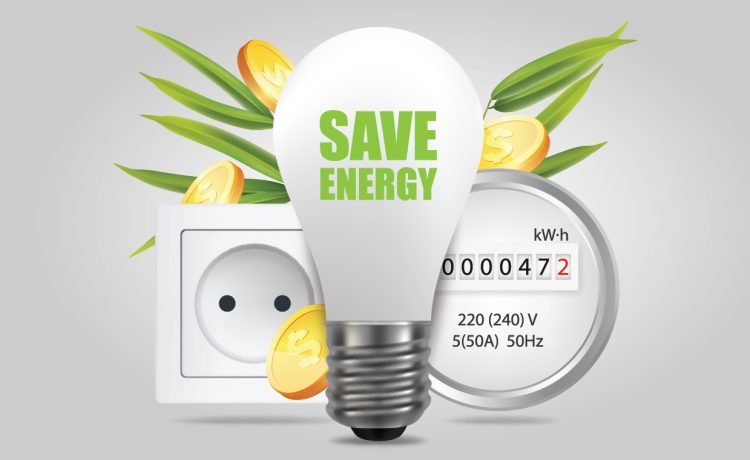The rise of blockchain technology has brought about numerous revolutionary changes in industries ranging from finance to supply chain management. However, alongside its impressive capabilities, blockchain has also faced significant criticism, particularly concerning its environmental impact. The most well-known example of this issue is Bitcoin’s energy-intensive Proof of Work (PoW) consensus mechanism, which requires vast amounts of computational power to secure transactions.
With growing concerns over climate change, energy consumption, and the environmental sustainability of emerging technologies, the question arises: Can blockchain, a technology often associated with high energy costs, play a role in promoting sustainability and addressing global environmental challenges?
In this article, we explore the green revolution of blockchain, discussing how it is addressing its energy consumption problem and working toward sustainable development. We will look at the innovative solutions being developed within the blockchain space, from energy-efficient consensus mechanisms to sustainable blockchain platforms.
The Energy Problem with Traditional Blockchain Networks
Before diving into the green solutions, it’s essential to first understand the energy consumption issues that have raised concerns about blockchain’s environmental impact.
1. The Proof of Work (PoW) Dilemma
Proof of Work is the consensus mechanism used by many blockchain networks, most notably Bitcoin and Ethereum (prior to its upgrade to Proof of Stake). PoW requires participants, known as miners, to solve complex mathematical problems to validate transactions and add new blocks to the blockchain.
This process is computationally expensive and requires large amounts of electricity to power the mining hardware. As the value of cryptocurrencies like Bitcoin increases, so does the competition among miners, leading to higher levels of computational power and, consequently, greater energy consumption.
- Bitcoin’s Energy Consumption: According to recent reports, Bitcoin’s annual electricity consumption is comparable to that of entire countries like Argentina or The Netherlands. Some estimates suggest that Bitcoin’s mining network consumes over 100 TWh (terawatt-hours) annually.
- Environmental Impact: The environmental concern comes from the fact that many mining operations rely on fossil fuels, particularly coal and natural gas, which contribute to carbon emissions and environmental degradation.
2. Scaling Blockchain and Its Energy Demands
As blockchain networks grow and scale, the energy demands also increase. In PoW systems, scaling the network means adding more miners, which leads to more electricity usage and a higher carbon footprint.
Moreover, smart contracts and decentralized applications (dApps) built on blockchain platforms can consume substantial energy, especially in cases where the underlying blockchain requires high computational resources.

How Blockchain Can Address Energy Consumption: The Green Revolution
Despite its reputation for high energy consumption, blockchain is not inherently unsustainable. The very technology that powers blockchain can also be used to create solutions that foster sustainability and reduce energy usage. Several emerging trends within the blockchain ecosystem are designed to make blockchain more energy-efficient and aligned with the goals of sustainable development.
1. Transitioning to Proof of Stake (PoS) Consensus Mechanism
The most widely discussed solution to the energy issue of blockchain is the transition from Proof of Work (PoW) to Proof of Stake (PoS) consensus mechanisms.
- Proof of Stake (PoS): Instead of requiring miners to solve complex cryptographic puzzles, PoS allows validators to create new blocks and confirm transactions based on the number of cryptocurrency tokens they hold and are willing to “stake” as collateral. This drastically reduces the computational energy required to validate transactions.
- Energy Efficiency: PoS is orders of magnitude more energy-efficient than PoW. For example, Ethereum’s transition from PoW to PoS (known as Ethereum 2.0) resulted in an estimated 99.95% reduction in energy consumption.
- Environmental Impact: PoS networks consume far less electricity since they don’t rely on mining operations that require high-performance hardware and large-scale computational work. This has the potential to make blockchain much more environmentally friendly.
- Examples of PoS Networks: Ethereum 2.0, Cardano, Polkadot, Tezos, and Algorand are some of the prominent blockchain platforms that use PoS, aiming to reduce energy usage and increase sustainability.
2. Carbon-Neutral and Eco-Friendly Blockchain Initiatives
Several blockchain platforms and projects are working towards achieving carbon-neutral status by offsetting their carbon emissions. These efforts focus on integrating blockchain with green energy sources and sustainable practices. Some of the strategies include:
- Using Renewable Energy: Blockchain miners and validators are increasingly turning to solar, wind, and hydropower for their energy needs. Some companies are committing to running their operations solely on green energy to reduce their environmental impact.
- Bitcoin Mining in Iceland: Iceland, with its abundance of geothermal and hydroelectric energy, has become a hub for Bitcoin mining. This model promotes the use of renewable energy in the mining process.
- Carbon Offsetting: Some blockchain projects are implementing carbon offsetting initiatives by investing in environmental projects, such as reforestation, renewable energy production, or carbon capture technology, to neutralize the environmental impact of their operations.
- Energy Web Foundation: The Energy Web Foundation is focused on creating a decentralized energy marketplace using blockchain technology. This initiative aims to promote the use of renewable energy sources and enhance energy efficiency.
- Green Blockchain Platforms: Several blockchain networks are explicitly designed with sustainability in mind, such as Chia Network, which uses Proof of Space and Time instead of PoW. This unique approach requires users to use hard drive space to participate in the network, significantly reducing energy consumption.
3. Blockchain for Tracking and Reducing Carbon Emissions
Blockchain technology is also being used to track and verify carbon emissions, thus aiding in efforts to reduce emissions across industries. Blockchain’s transparency, immutability, and traceability can help organizations and governments monitor the carbon footprint of various industries, products, and supply chains.
- Carbon Credit Systems: Blockchain-based platforms can create and manage carbon credits more efficiently. By tokenizing carbon credits, blockchain enables transparent and secure trading, ensuring that companies pay for their carbon emissions and incentivizing them to reduce their environmental impact.
- IBM’s Carbon Credit Program: IBM is using blockchain technology to enable the creation of a global carbon credit marketplace, allowing businesses to buy and sell carbon offsets in a transparent and verifiable way.
- Supply Chain Transparency: Blockchain can track the entire life cycle of products, from raw material extraction to end-consumer delivery. This helps companies reduce waste and increase the sustainability of their supply chains, contributing to overall carbon footprint reduction.
4. Blockchain for Energy Trading and Efficiency
Blockchain can help improve the efficiency of energy systems by enabling more efficient energy trading, distribution, and management. Decentralized energy grids powered by blockchain technology can allow consumers to trade excess energy generated by renewable sources (such as solar panels or wind turbines) directly with others in their community, without needing intermediaries like utility companies.
- Peer-to-Peer (P2P) Energy Trading: Blockchain enables P2P energy trading, where consumers can directly buy and sell renewable energy without the need for traditional energy providers. This not only makes the energy system more efficient but also encourages the adoption of green energy.
- Power Ledger: Power Ledger is a blockchain platform that enables P2P energy trading, allowing consumers to trade solar energy and other forms of renewable energy. This helps reduce reliance on non-renewable sources and fosters a more sustainable energy ecosystem.
- Grid Management: Blockchain can also be used to improve the management and distribution of energy across grids, reducing energy waste and enhancing overall grid efficiency. This could result in a more sustainable energy network.
Challenges and Future Outlook for Blockchain’s Green Revolution
While the potential for blockchain to address environmental concerns is enormous, several challenges remain in realizing its full green potential:
- Scalability: The environmental benefits of PoS networks are evident, but scalability issues and the risk of fragmentation within blockchain ecosystems still need to be addressed.
- Adoption: The widespread adoption of energy-efficient consensus mechanisms like PoS across major blockchain networks (including Bitcoin) will be essential for achieving sustainability goals in the long term.
- Energy Usage in Blockchain Development: Even eco-friendly blockchains require energy for their development, infrastructure, and upkeep. The use of renewable energy in data centers and network nodes is crucial for minimizing this impact.
Conclusion: Blockchain’s Role in the Future of Sustainable Development
Blockchain technology has the potential to contribute significantly to sustainable development by reducing energy consumption, promoting the use of renewable energy, and enabling greater transparency in carbon tracking and emissions. Through innovations like Proof of Stake, carbon offsetting initiatives, green blockchain platforms, and peer-to-peer energy trading, blockchain can play a pivotal role in combating climate change and advancing global sustainability goals.
The green revolution of blockchain is just beginning, and while challenges remain, the technology’s ability to drive energy efficiency and promote sustainable practices can help create a more eco-friendly and inclusive financial and energy system. By continuing to innovate and adopt greener solutions, blockchain has the opportunity to transform from an energy-intensive technology into a key player in solving the world’s most pressing environmental challenges.

















































